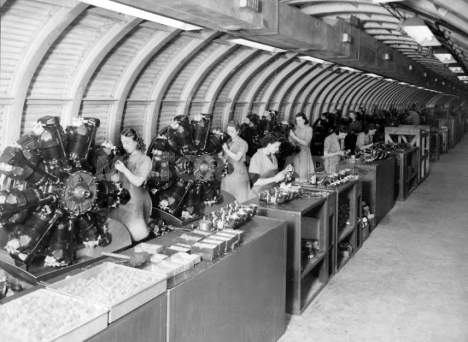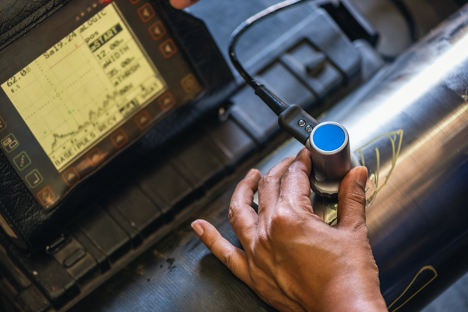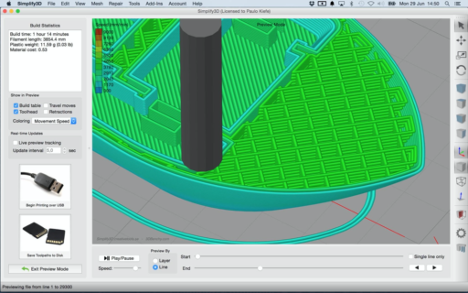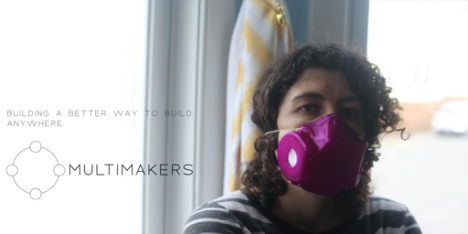
During World War 2, the United Kingdom faced supply chain disruptions as severe and unpredictable as we are experiencing today. To solve this problem they established the Shadow Scheme, creating one of the first examples of distributed manufacturing.

Early war Spitfire Mk IIa fighterplanes. Image Credit: Royal Air Force official photographer, 1942
According to this plan, they built dozens of Shadow Factories, both above and underground, keeping them secret from the Axis powers. They converted farmland, hills and golf courses to production locations. They opened factories near areas that had lost jobs so that people could work. The goal was to spread their manufacturing out among as many facilities as possible, as far away as possible, so that, if one was incapacitated, they could keep production going. After all, if all Spitfire crankshafts were produced in one facility and that facility was destroyed, then that would mean the end of Spitfire production.

Longbridge Spitfire Shadow Factory. Image Credit: Dowty Heritage
The plan was a resounding success. By 1938 they were producing their first complete aircraft through a distributed network of facilities spread across the British Empire. The Shadow Factories kept Britain’s manufacturing capacity strong throughout the war, no matter what was thrown at them.
Now, we face a similar problem: what happens if a centralized facility is incapacitated by COVID-19, a hurricane or civil unrest?
Distributed Manufacturing
Distributed manufacturing is the process whereby products or parts of products are made by many separate partners, spread out across geographically diverse areas, coordinated by a common communications and information system.
While hub-and-spoke manufacturing will never completely go away, fully relying on just-in-time supply chains is no longer dependable. Shipment and distribution of material, goods and food can and will be disrupted by this pandemic, climate change—maybe more. This is on top of the environmental damage that international shipping and mass-consumption of disposable plastic goods causes.
With the rise of digital technologies we can build a distributed network to produce 3D-printed parts, circuit boards, laser-cut components, etc. more easily than ever before. By spreading the manufacturing load across many different people in many different places, we can turn the tide and ensure that, no matter what happens, we can keep producing vital goods. Shipping cost and complexity can actually go down in this system if goods are produced closer to their final place of consumption and if the only thing that’s shipped is raw materials.
Quality Assurance
Probably the most challenging issue facing distributed manufacturing systems is how to ensure quality, especially if you’re opening up your platform to everyone from individuals to large companies.
For example, how do you ensure a 3D-printed object from an individual maker at home is up to the same quality standards as what comes out of a professional 3D printing house? Or a circuit board, laser-cut part, etc?
One way is to ensure that the computer code used to produce each part is unchanged between orders. Once the manufacturer is approved to produce, they cannot use a different set of instructions from order to order.
Ok, so that’s the process, but how do you track lot numbers, production runs, etc?
If you want to see how one organization is answering these questions and more, Multimakers has recently launched a crowdfunding campaign on Kickstarter to raise funds for developing a distributed manufacturing platform and certifying two COVID-19 masks designed from the ground up to be produced in a distributed manner. Check it out here by clicking here.
Conclusion
COVID-19 has disrupted our way of life in unprecedented ways. 3D printing and other elements of the maker movement have come to the forefront in this crisis as ways to rapidly scale manufacturing capacity. But, until now, even these herculean efforts are working at less than maximum capacity. It’s only by networking and joining together that we can create a sustainable pattern for producing goods in an increasingly tumultuous world. With distributed manufacturing we can unlock the true power of digital manufacturing.
Subscribe to Our Email Newsletter
Stay up-to-date on all the latest news from the 3D printing industry and receive information and offers from third party vendors.
You May Also Like
3D Printing Unpeeled: New Arkema Material for HP, Saddle and Macro MEMS
A new Arkema material for MJF is said to reduce costs per part by up to 25% and have an 85% reusability ratio. HP 3D HR PA 12 S has been...
3D Printing News Briefs, January 20, 2024: FDM, LPBF, Underwater 3D Printer, Racing, & More
We’re starting off with a process certification in today’s 3D Printing News Briefs, and then moving on to research about solute trapping, laser powder bed fusion, and then moving on...
3D Printing Webinar and Event Roundup: December 3, 2023
We’ve got plenty of events and webinars coming up for you this week! Quickparts is having a Manufacturing Roadshow, America Makes is holding a Member Town Hall, Stratafest makes two...
Formnext 2023 Day Three: Slam Dunk
I’m high—high on trade show. I’ve met numerous new faces and reconnected with old friends, creating an absolutely wonderful atmosphere. The excitement is palpable over several emerging developments. The high...




































